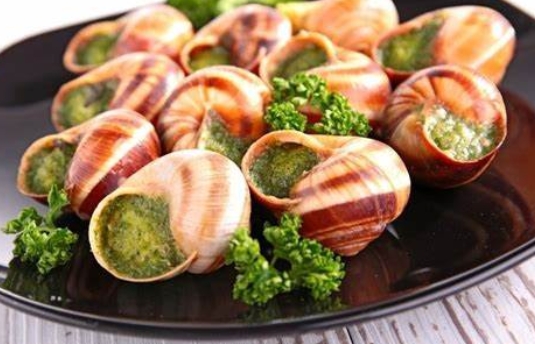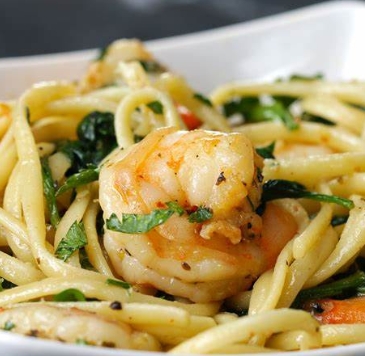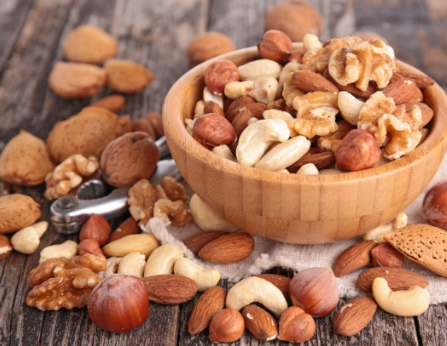Escargot, or snails, is a quintessential French delicacy that has been savored for centuries. While it may sound unusual to some, this dish holds a special place in French cuisine and is revered for its unique texture, rich flavor, and the culinary expertise involved in preparing it. Escargot has transcended its origins to become a symbol of French gastronomy, often featured in fine dining restaurants across the globe.
The history of escargot as a dish can be traced back to ancient times, but it became especially popular in France during the Roman Empire. The Romans were known to have enjoyed escargot as a delicacy, and they cultivated snails in special gardens to ensure a steady supply of this prized food. In France, escargot continued to be a symbol of luxury and sophistication, especially in regions like Burgundy, where the perfect conditions for snail farming were found.
Escargot is typically made from land snails, most commonly the species Helix pomatia, though other varieties are also used. In France, snails are often raised in farms, where they are carefully tended to ensure they are of the highest quality. Before they are cooked, escargot must be thoroughly cleaned and purged to remove any dirt or impurities, as they can be quite slimy. Once cleaned, the snails are prepared in a variety of ways, often following traditional recipes that highlight the delicate flavors of the mollusk.
One of the most iconic ways to prepare escargot is by baking them in their shells, coated with a garlic butter sauce that includes parsley, shallots, and sometimes a touch of white wine. This method allows the snails to absorb the flavors of the garlic butter, which complements their natural earthiness. The garlic butter sauce is often rich and fragrant, making each bite of escargot a truly indulgent experience. The snails are usually served in a special dish called an escargot plate, which holds the snails in their shells while keeping the butter sauce intact.
When cooked properly, escargot has a tender yet slightly firm texture that is both unique and satisfying. The flavor of the snail itself is often described as delicate and earthy, with subtle hints of the herbs and spices used in the preparation. The garlic butter sauce, with its rich, savory depth, infuses the snails, elevating their flavor and making each bite a heavenly experience.
Escargot is often served as an appetizer in France, and it is typically accompanied by crusty French bread to soak up the delicious garlic butter sauce. The combination of the tender escargot and the crispy bread is a harmonious balance of textures, making it a perfect start to a luxurious meal. Escargot is also enjoyed with a glass of crisp white wine or champagne, which enhances the richness of the dish while providing a refreshing contrast.
In addition to the traditional garlic butter preparation, escargot can be made in a variety of other ways, depending on the region and personal preferences. In Burgundy, escargot is often cooked with parsley, butter, and garlic, a simple but effective combination that lets the flavor of the snail shine through. Some recipes may include herbs de Provence or cognac to add a touch of regional flair to the dish.
Escargot has also found its place in modern French cuisine, with chefs experimenting with new and innovative ways to serve this delicacy. For instance, some chefs may serve escargot on a bed of risotto, combining the snail with the creamy texture of the rice and the richness of the butter sauce. Others may serve escargot as part of a seafood platter, showcasing the snails alongside oysters, clams, and other fresh seafood.
Although escargot remains a symbol of luxury and refinement, it is enjoyed by people of all walks of life in France. In some regions, it is even served during special occasions, like Christmas or New Year’s Eve, as a festive treat to share with family and friends. In the countryside, you might find traditional family recipes passed down through generations, where escargot is made in large batches and served at gatherings.
Escargot’s allure extends beyond France, and it is often featured on menus in French restaurants around the world. Its unique preparation and rich flavor make it an intriguing choice for adventurous eaters, and for those willing to step outside their culinary comfort zones, escargot offers an unforgettable dining experience.
Despite its status as a high-end dish, escargot is actually quite simple to prepare at home with the right ingredients. While some may find the idea of eating snails intimidating, once tasted, escargot is often seen as a surprisingly delicious dish that is both decadent and satisfying. For those who are interested in making escargot at home, all that is needed are fresh snails, garlic butter, and a bit of patience to get the preparation just right.
In the end, escargot is more than just a dish; it is a reflection of French culinary culture. Its preparation requires skill and precision, and each bite offers a taste of French tradition. Whether enjoyed in a fine-dining restaurant or prepared at home for a special occasion, escargot continues to be a beloved part of French gastronomy, bringing people together over a shared love of food, culture, and culinary artistry.





